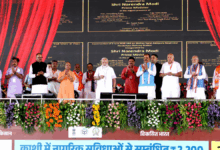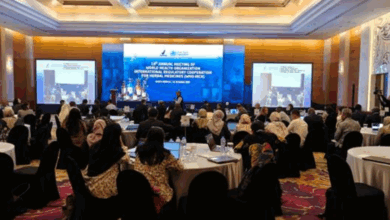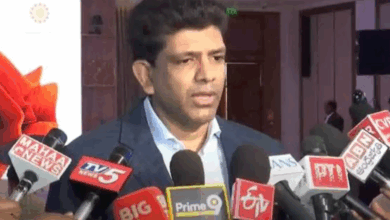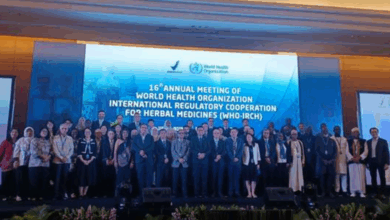Shri Dharmendra Pradhan launches DBT in NAPS to strengthen the apprenticeship ecosystem in India
A Chintan Shivir on “Enhancing Apprenticeship Engagement” organized to elevate the uptake of apprenticeship programs among all stakeholders
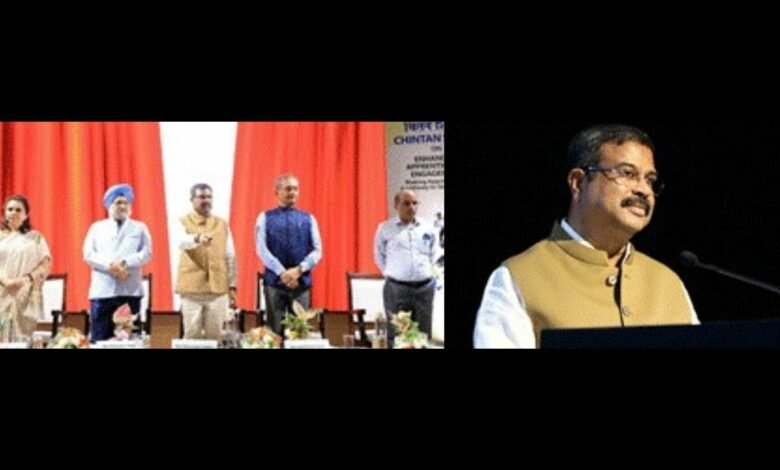
To bolster the participation of both industries and young individuals in apprenticeship training on a nationwide scale, Shri Dharmendra Pradhan, Union Minister for Education and Skill Development & Entrepreneurship today launched Direct Benefit Transfer (DBT) in National Apprenticeship Promotion Scheme (NAPS). An amount of approx Rs.. 15 crores was disbursed to one lakh apprentices by the Minister today marking the launch of DBT in NAPS.
A total of 25 lakh youth have been engaged as apprentices since the inception of the National Apprenticeship Promotion Scheme in 2016, till 31st July 2023. Around 2.6 lakh Apprentices have completed training in FY 23-24.
The Government of India’s proactive efforts to promote quality training across sectors led to the number of active establishments subsequently increasing from 6,755 in 2018-19 to 40,655 in 2023-24.
Lauding the initiative, Shri Dharmendra Pradhan said that today is a momentous day towards invigorating the apprenticeship ecosystem in our country. The launch of DBT in the National Apprenticeship Promotion Scheme is a big step towards fulfilling our Prime Minister Shri Narendra Modi’s vision of making skilling an apprenticeship aspirational as well as encouraging earning while learning as envisioned in NEP. He congratulated all the 1 lakh apprentices who have received a stipend through DBT today.
Shri Atul Kumar Tiwari, Secretary, Ministry of Skill Development & Entrepreneurship said that empowering our nation’s youth with skills is at the heart of our vision, and the introduction of Direct Benefit Transfer (DBT) through NAPS marks a stride towards transparency and efficiency. A skilled workforce is paramount, and our multifaceted strategy, encompasses policy evolution, industry synergies, and heightened recognition. In harmony with India’s core values of inclusivity and diversity, today’s Chintan Shivir on Apprenticeship underscores a crucial mission. Together, we forge ahead to craft a future where every individual’s potential finds its truest expression, he added.
Shri Dharmendra Pradhan interacted with some of the vibrant industry clusters and enthusiastic apprentices across Maharashtra, Telangana, Himachal Pradesh, Kerala, Haryana, and Uttar Pradesh. There has been a 488% increase in the number of establishments that have started apprenticeship training since the commencement of NAPS. This increased adoption of apprenticeship training will strengthen our nation’s workforce and economy. Some of them were the Mahratta Chamber of Commerce, Industries and Agriculture (MCCIA), the Baddi Cluster from Himachal Pradesh and North Malabar Consortium Industry cluster
The MSDE also organized the Chintan Shivir on “Enhancing Apprenticeship Engagement” to elevate the uptake of apprenticeship programs among all stakeholders. A core facet of this session is to amplify the role and responsibility of various entities, including other central and state governments, industry bodies, and the private sector.
The Chintan Shivir was divided into three breakout sessions themed on Stakeholder Convergences to Make Apprenticeship Aspirational, Strategies and Practices to promote Quality Apprenticeship, and Creating a Diverse and Inclusive Apprenticeship Ecosystem, respectively.
These sessions were co-chaired by Smt Sonal Mishra, Joint Secretary, MSDE, Additional Secretary, MSDE and Smt, Soumya Gupta, Joint Secretary, MoE MSDE; Trishaljit Sethi, Additional Secretary, Director General, DGT, MSDE and Shri Ved Mani Tiwari, CEO, NSDC and MD, NSDC International; Shri. Nilambuj Sharan, Senior Economic Adviser, MSDE and Smt. Heena Usman, Joint Secretary, MSDE.
The deliberations were centred around:
- Fostering dialogue exchange on apprenticeship
- Increase uptake of apprenticeship
- Quality enhancement
- The necessity of equal opportunities for all, including marginalized, unserved, and underserved communities from various backgrounds and geographies.
The key achievements of the National Apprenticeship Promotion Scheme (NAPS) include:
- In FY 2023-24, approximately 2.6 lakh apprentices successfully completed their training.
- Women apprentices have also increased from 22,427 in 2018-19 to 1.48 lakh in FY 2022-23, registering a nearly 7-fold increase in the last five years.
- The number of active establishments has subsequently increased from 6,755 in 2018-19 to 40,655 in 2023-24.
- In 2022-2023: We have trained 4.80 lakh apprentices in Optional Trades while in DT we have trained 2.58 lakh apprentices.
- We today witness states like Gujarat, Maharashtra, Haryana, Uttar Pradesh, Tamil Nadu, Karnataka, and Telangana topping the apprenticeship engagement chart
- More than 9 lakh youth who are apprentices today are in the age group of 23-26
- There are takers right from 5-8th pass out to Graduate, Post Graduate and Certificate holders who have opted for apprenticeship training
- Our last mile impact has today reached out to North Eastern Region, to aspirational districts and tribal districts
- To create awareness about Apprenticeship we have held Pradhan Mantri National Apprenticeship Melas and Kaushal Mahotsav and industry cluster workshops at a large scale across the country
- There is participation from Industrial Corridors, Industrial Parks, Chamber of Commerce, Private sector banks, Large CA Firms, Sector Skills Councils and Industry clusters in boosting apprenticeship training
With the implementation of NAPS, the Government of India reimburses 25% of the prescribed stipend — subject to a maximum of Rs. 1500/- per month per apprentice — that all employers undertake by engaging apprentices. With the implementation of NAPS, it has been noted that not all establishments seek partial reimbursement of stipend by the Government. Going by past trends, 30% of target apprentices, under NAPS 2.0, will be paid their stipend by the Government of India. With the implementation of DBT, the number of apprentices is expected to increase. Accordingly, the percentage of apprentices covered will be going up beyond 30%.
Disclaimer: This is an official press release by Pib.


